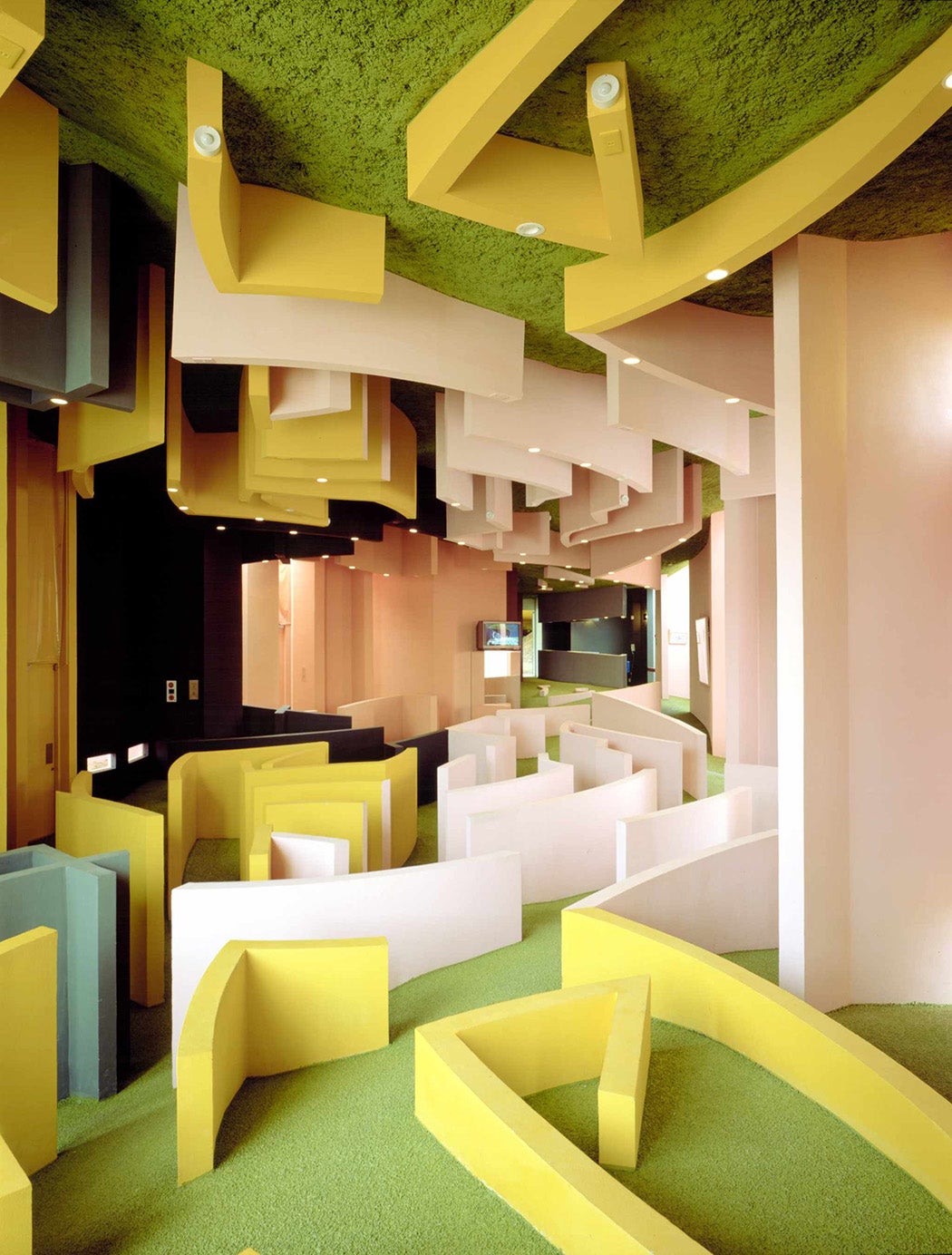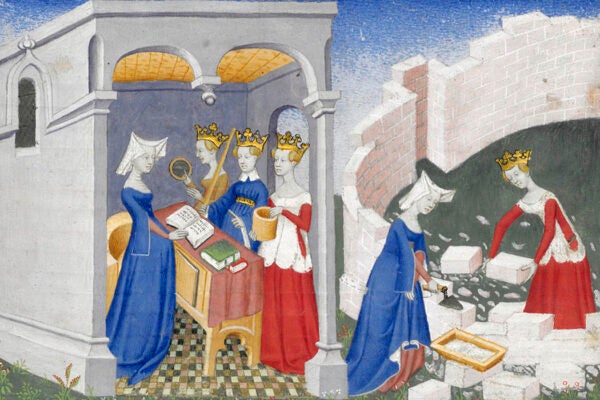Could architecture, with the right design, allow humans to live longer? And not just live longer but to overcome mortality and eradicate death? These were the questions that drove the designs of Shusaka Arakawa and Madeline Gins. Collectively known as Arakawa and Gins, the duo founded the Reversible Destiny Foundation in 1987 to pursue their work.
Arakawa was born in Nagoya, Japan, in 1936. He began his career as a conceptual artist and was one of the founding members of the Neo Dadaism Organizers collective in Japan. He moved to New York in 1961 and met Madeline Gins the following year. Gins was born in New York City in 1941. Raised on Long Island, she studied philosophy and physics at Barnard College, graduating in 1962, the same year she met Arakawa. They began their lifelong collaboration in 1963. They would experiment through many media, including painting, film, writing and of course, architecture. Gins herself stated that the future of philosophy lies in architecture.
Arakawa and Gins’s 2006 publication, Make Dying Illegal, shares the Reversible Destiny statement of philosophy:
Not making an all-out effort to go on living and the act of dying from this date on classed first-order felonies. Citizens will need to strive to define the heartiness of their existences and be responsible for astute and timely assessment of negative turns of events and failed or failing conditions. Choosing to live within a tactically posed surround/tutelary abode will be counted as an all-out effort to go on living.
This principle—that it was necessary to exist within an environment that constantly challenges the body through instability—became the basis for their architectural designs. While much of their work remained unbuilt, there are a handful of sites between the United States and Japan that reveal their vision for the built environment.

Take the Bioscleave House (Lifespan Extending Villa) in East Hampton, New York, and the Reversible Destiny Lofts—Mitaka (In Memory of Helen Keller), two residential designs that show us how Arakawa and Gins intended to defeat mortality. They used bold, bright colors dramatically and unconventionally throughout, both on the exterior and interior. The visual barrage on the eyes gives a radically different experience than the typical calm, mellow colors used in residential architecture. Yet the bright colors are nothing compared to the interior arrangements. Uneven flooring. Irregular room shapes. Poles for structure, or perhaps for climbing? Every movement that the human body makes through these spaces must be calculated.
When considering the housing designs of Arakawa and Gins, literary studies scholar Samira Kawash asks the question many are thinking: “How can anyone live in such a house?”
But as Kawash explains, comfort and habitability—the stability we expect from a home—aren’t the point of an Arakawa and Gins design. She writes that
perhaps the persistence of the questions of inhabitability, if one remains attentive, might remain open: not, “is this house really inhabitable?” but rather “what would it mean to truly inhabit this house? What sort of body/being might be required or produced as this house’s inhabitant?”
This is the type of resident (and human) Arakawa and Gins push us to be.
Weekly Newsletter
Located in Yoro Park, in Yoro, Japan, the Site of Reversible Destiny offers another chance to experience Arakawa and Gins’s vision. There, in a rural park setting, they created a vibrant outdoor space filled with undulating places, irregular forms, and the expected explosion of color. Visitors to the Site of Reserve Destiny today are encouraged to wear shoes with grip and a helmet. When recounting his experience there, architect and professor Richard J. Weller writes that “[a]s your eyes consume the outrageous panorama of the site, your feet struggle to feel the next few inches without falling. And yet, no matter how long you resist, you will fall.”
Arakawa and Gins weren’t able to escape physical mortality themselves. Arakawa passed away in 2010, Gins in 2014. Yet one could argue that they continue to live on through their architectural philosophy. Their theory, drawings, works, and foundation remain today. An Airbnb listing allows anyone interested to experience the Reversible Destiny Lofts—Mitaka (In Memory of Helen Keller). The Side of Reserve Destiny in Yoro Park is open to visitors year-round (and yes, helmets are available free of charge). In this way, Arakawa and Gins endure, continuing to engage in the architectural debates of our time.







